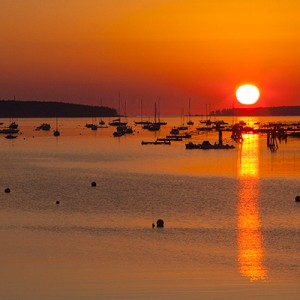2011.7.8In the morning, I had a walk around the lodge and took some more pictures. Parrots sang and frogs croaked, I was immersed in the sounds of nature.
Our plan for the day was to take boat upstream for 4 hours to Chuncho. We would camp there over night and watch Macaw’s clay lick the next day morning. Most visitors to the lodge take 3 days and 2 nights tour, so they only go to see Macaws in a place near the lodge. We certainly wished that we could see more for the extra day and money we spent.
Unlike our White Desert trip in Egypt, which we went with only a driver and a guide, we had a large team of 5-person here, our guide, a captain (driver), his assistant, a cook and the lodge owner’s daughter-in-law. I guess visitors rarely take trips like this, so the owner’s daughter-in-law was interested in seeing those Macaws too.
After one hour, we arrived at the first check point of Tambopata National Reserve. We signed our names on their huge signature book and they stamped a puma mark on our passports.
The captain had sharp eyes. He often spotted something unusual on the bank and he stopped the boat and pointed them to us.
It was the dry season – sometimes the water level was too low and captain’s assistant had to use a long pole to move the boat.
He also had to watch the river for torrents and obstacles. The river was smooth most of the time, but it was turbulent with floating logs and underwater reefs at some places. I heard the assistant talked with our guide about one incident he had, although I don’t understand Spanish, but from their moves, I knew the assistant was saying that he was on a boat that hit the reefs, shot up and threw him into the water.
After another two and a half hours, we reached the second check point. The Tambopata River and the Malinowski River merged here. Their color difference is quite distinctive – the Tambopata River is clean and the Malinowski River is in brown color.
We kept on sailing upstream in Tambopata River. The water became clear and tranquil.
It took us some time to locate a small island to dock the boat. Our guide said, the last time he came here was several years ago, the water and land looked very different now. The river changes route every year. An experience driver is necessary to sail in the river like this.
While others were setting up camps, our guide took us to a short hike on the island. The island is covered by the secondary forest. The plant species is not very diversified.
We came back without walking very far. Four tents have been setup. The captain and his assistant would sleep on the boat. We had some free time playing around the island, while others swimming in the river and preparing the dinner. It was warm during the night and surprisingly there were not many mosquitoes. It was much more comfortable than we imagined.






















Love your photo of the capybara family! Didn’t know that was possible 🙂
Here are my recent adventures in the reserve … huge trees of the Tombopato Reserve and the macaw clay-lick on the Tombopato River of Peru hope it might adds!
You got some really nice pictures of clay-licking macaws.